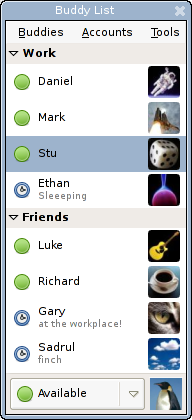Instant messaging (IM) is a collection of technologies used for text-based communication between two or more participants over the Internet or other types of networks. Of importance is that online chat and instant messaging differs from other technologies such as e-mail due to the perceived synchronicity of the communications by the users –chat happens in real-time. Some systems permit messages to be sent to people not currently 'logged on' (offline messages), thus removing some of the differences between IM and e-mail (often done by sending the message to the associated e-mail account).

IM allows effective and efficient communication, allowing immediate receipt of acknowledgment or reply. In many cases instant messaging includes additional features which can make it even more popular. For example, users can see each other by using webcams, or talk directly for free over the Internet using a microphone and headphones or loudspeakers. Many client programs allow file transfers as well, although they are typically limited in the permissible file-size.
It is typically possible to save a text conversation for later reference. Instant messages are often logged in a local message history, making it similar to the persistent nature of e-mails.
Team building lab (PDF)
Networking lab (PDF)
Optional lab: graphical user interfaces in Swing (PDF)
Project (PDF)
Project Source code - Instant messaging
guichat (ZIP) (This ZIP file contains 2 .jar files, 2 .java files and 2 files with no file extension.)
friendly (ZIP) (This ZIP file contains 6 .java files and 2 files with no file extension.)
guiwords (ZIP) (This ZIP file contains 2 .jar files, 2 .java files and 3 files with no file extension.)










